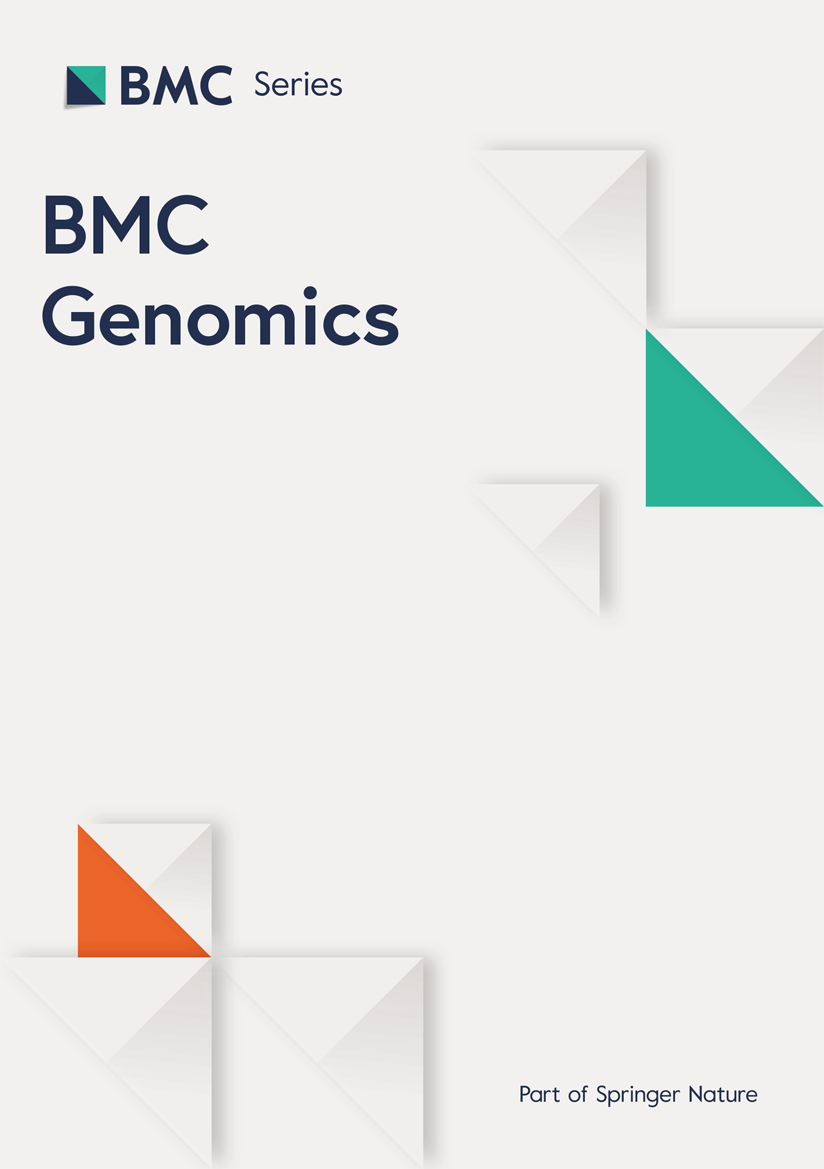De Vita P, Taranto F. Durum wheat (Triticum turgidum ssp. durum) breeding to Meet the challenge of climate change. In: Al-Khayri JM, Jain SM, Johnson DV, editors. Advances in plant breeding strategies: cereals: volume 5. Cham: Springer International Publishing; 2019. pp. 471–524.
Google Scholar
De Vita P, Taranto F, editors. Durum wheat breeding and genetics. Basel, Switzerland: MDPI – Multidisciplinary Digital Publishing Institute; 2020.
Google Scholar
Broccanello C, Bellin D, DalCorso G, Furini A, Taranto F. Genetic approaches to exploit landraces for improvement of Triticum turgidum ssp. Durum in the age of climate change. Front Plant Sci. 2023;14:1101271.
Grosse-Heilmann M, Cristiano E, Deidda R, Viola F. Durum wheat productivity today and tomorrow: a review of influencing factors and climate change effects. Resources, Environment and Sustainability. 2024;17:100170.
Google Scholar
Martínez-Moreno F, Solís I, Noguero D, Blanco A, Özberk İ, Nsarellah N, et al. Durum wheat in the mediterranean rim: historical evolution and genetic resources. Genet Resour Crop Evol. 2020;67:1415–36.
Google Scholar
Martínez-Moreno F, Ammar K, Solís I. Global changes in cultivated area and breeding activities of durum wheat from 1800 to date: a historical review. Agronomy. 2022;12:1135.
Google Scholar
Lopes MS, El-Basyoni I, Baenziger PS, Singh S, Royo C, Ozbek K, et al. Exploiting genetic diversity from landraces in wheat breeding for adaptation to climate change. J Exp Bot. 2015;66:3477–86.
Google Scholar
Xynias IN, Mylonas I, Korpetis EG, Ninou E, Tsaballa A, Avdikos ID, et al. Durum wheat breeding in the Mediterranean region: current status and future prospects. Agronomy. 2020;10:432.
Google Scholar
Tedone L, Ali SA, Verdini L, De Mastro G. Nitrogen management strategy for optimizing agronomic and environmental performance of rainfed durum wheat under mediterranean climate. J Clean Prod. 2018;172:2058–74.
Google Scholar
Sabella E, Aprile A, Negro C, Nicolì F, Nutricati E, Vergine M, et al. Impact of climate change on durum wheat yield. Agronomy. 2020;10:793.
Google Scholar
Rossini A, Ruggeri R, Belocchi A, Rossini F. Response of durum wheat cultivars to climate change in a mediterranean environment: trends of weather and crop variables at the turn of 21st century. J Agron Crop Sci. 2024;210:e12786.
Google Scholar
European Commission. (2024) Cereals market situation. Expert group for agricultural markets, subgroup arable crops and olive oil (E02730/2), Meeting Jan 29, Brussels, Point 3.1. https://ec.europa.eu/transparency/expert-groups-register/core/api/front/document/101943/download. Accessed 24 Feb 2025.
D’Odorico P, Emmel C, Revill A, Liebisch F, Eugster W, Buchmann N. Vertical patterns of photosynthesis and related leaf traits in two contrasting agricultural crops. Funct Plant Biol. 2018;46:213–27.
Google Scholar
Toreti A, Bavera D, Acosta NJ, Acquafresca L, Arias-Muñoz C, Avanzi F et al. Drought in the Mediterranean Region – January 2024. JRC Publications Repository. 2024. https://publications.jrc.ec.europa.eu/repository/handle/JRC137036. Accessed 25 Feb 2025.
Mazzucotelli E, Sciara G, Mastrangelo AM, Desiderio F, Xu SS, Faris J, et al. The global durum wheat panel (GDP): an international platform to identify and exchange beneficial alleles. Front Plant Sci. 2020;11:569905.
Maccaferri M, Harris NS, Twardziok SO, Pasam RK, Gundlach H, Spannagl M, et al. Durum wheat genome highlights past domestication signatures and future improvement targets. Nat Genet. 2019;51:885–95.
Google Scholar
Laribi M, Fredua-Agyeman R, Ben M, Sansaloni CP, Dreisigacker S, Gamba FM, et al. Genome-wide association analysis of Tan spot disease resistance in durum wheat accessions from Tunisia. Front Genet. 2023;14:1231027.
Hoisington D, Khairallah M, Gonzalez-de-Leon D. Laboratory protocols. 2nd ed. CIMMYT Applied Molecular Genetics Laboratory. CIMMYT: Texcoco, Mexico. 1994. Available at: http://repository.cimmyt.org/xmlui/bitstream/handle/10883/1333/91195.pdf (Accessed on April 20, 2015).
Gruber B, Unmack PJ, Berry OF, Georges A. Dartr: an R package to facilitate analysis of SNP data generated from reduced representation genome sequencing. Mol Ecol Resour. 2018;18:691–9.
Google Scholar
Liu K, Muse SV. PowerMarker: an integrated analysis environment for genetic marker analysis. Bioinformatics. 2005;21:2128–9.
Google Scholar
LiLin Y. Package CMplot. 7. 2018. https://github.com/YinLiLin/R-CMplot.
Jombart T. Adegenet: a R package for the multivariate analysis of genetic markers. Bioinformatics. 2008;24:1403–5.
Google Scholar
Goudet J, Jombart T, Goudet MJ. October. Package ‘hierfstat.’ Estimation and Tests of Hierarchical F-Statistics. 2015. Available online: https://cloudr-projectorg/ (Accessed on 13 2022).
Bradbury PJ, Zhang Z, Kroon DE, Casstevens TM, Ramdoss Y, Buckler ES. TASSEL: software for association mapping of complex traits in diverse samples. Bioinformatics. 2007;23:2633–5.
Google Scholar
Breseghello F, Sorrells ME. Association analysis as a strategy for improvement of quantitative traits in plants. Crop Sci. 2006;46:1323–30.
Google Scholar
Cleveland WS. Robust locally weighted regression and smoothing scatterplots. J Am Stat Assoc. 1979;74(368):829–36.
Google Scholar
Wickham H. Programming with ggplot2. In: ggplot2. Use R!. Cham: Springer; 2016. https://doi.org/10.1007/978-3-319-24277-4_12.
Weir BS, Cockerham CC. Estimating F-statistics for the analysis of population structure. Evolution. 1984;38:1358–70.
Woldeyohannes AB, Iohannes SD, Miculan M, Caproni L, Ahmed JS, de Sousa K, et al. Data-driven, participatory characterization of farmer varieties discloses teff breeding potential under current and future climates. Elife. 2022;11:e80009.
Google Scholar
Pritchard JK, Stephens M, Rosenberg NA, Donnelly P. Association mapping in structured populations. Am J Hum Genet. 2000;67:170–81.
Google Scholar
Evanno G, Regnaut S, Goudet J. Detecting the number of clusters of individuals using the software structure: a simulation study. Mol Ecol. 2005;14:2611–20.
Google Scholar
Earl DA, VonHoldt BM. Structure harvester: a website and program for visualizing STRUCTURE output and implementing the Evanno method. Conserv Genet Resour. 2012;4:359–61.
Google Scholar
Wang J, Zhang Z. GAPIT version 3: boosting power and accuracy for genomic association and prediction. Genomics Proteomics Bioinform. 2021;19:629–40.
Google Scholar
Hill WG, Weir BS. Variances and covariances of squared linkage disequilibria in finite populations. Theor Popul Biol. 1988;33:54–78.
Google Scholar
Kabbaj H, Sall AT, Al-Abdallat A, Geleta M, Amri A, Filali-Maltouf A, et al. Genetic diversity within a global panel of durum wheat (Triticum durum) landraces and modern germplasm reveals the history of alleles exchange. Front Plant Sci. 2017;8:1277.
Soriano JM, Villegas D, Aranzana MJ, del Moral LFG, Royo C. Genetic structure of modern durum wheat cultivars and mediterranean landraces matches with their agronomic performance. PLoS ONE. 2016;11:e0160983.
Google Scholar
Rufo R, Alvaro F, Royo C, Soriano JM. From landraces to improved cultivars: assessment of genetic diversity and population structure of mediterranean wheat using SNP markers. PLoS One. 2019;14:e0219867.
Google Scholar
Taranto F, D’Agostino N, Rodriguez M, Pavan S, Minervini AP, Pecchioni N, et al. Whole genome scan reveals molecular signatures of divergence and selection related to important traits in durum wheat germplasm. Front Genet. 2020;11:217.
Mahboubi M, Mehrabi R, Naji AM, Talebi R. Whole-genome diversity, population structure and linkage disequilibrium analysis of globally diverse wheat genotypes using genotyping-by-sequencing DArTseq platform. 3 Biotech. 2020;10:48.
Google Scholar
Ebrahimi P, Karami E, Etminan A, Talebi R, Mohammadi R. Genetic diversity and Genome-Wide association study for some agronomic traits in durum wheat (Triticum turgidum L.) using whole genome DArTseq markers. Plant Mol Biol Report. 2025:1–17.
Dukamo BH, Degu HD, Abitie AG, Asfaw BT. Genetic diversity analysis and population structure of selected Ethiopian durum wheat (T. turgidum subsp. durum) landraces using DArTseq markers. J Agric Food Res. 2024;18:101529.
Google Scholar
Fufa M, Gedebo A, Letta T, Lule D. Genetic diversity and population structure analysis in tetraploid wheat (Triticum turgidum spp) germplasm from Ethiopia based on DArTSeq markers. Genet Resour Crop Evol. 2024;71:2415–33.
Google Scholar
Baloch FS, Alsaleh A, Andeden EE, Hati̇Poğlu R, Nachit M, Özkan H. High levels of segregation distortion in the molecular linkage map of bread wheat representing the West Asia and North Africa region. Turk J Agric For. 2016;40:352–64.
Google Scholar
Baloch FS, Alsaleh A, Shahid MQ, Çiftçi V, de Miera LES, Aasim M, et al. A whole genome DArTseq and SNP analysis for genetic diversity assessment in durum wheat from central fertile crescent. PLoS ONE. 2017;12:e0167821.
Google Scholar
Alipour H, Bihamta MR, Mohammadi V, Peyghambari SA, Bai G, Zhang G. Genotyping-by-sequencing (GBS) revealed molecular genetic diversity of Iranian wheat landraces and cultivars. Front Plant Sci. 2017;8:1293.
Google Scholar
Sieber A-N, Longin CFH, Würschum T. Molecular characterization of winter durum wheat (Triticum durum) based on a genotyping-by-sequencing approach. Plant Genet Resour. 2017;15:36–44.
Google Scholar
Robbana C, Kehel Z, Ben Naceur M, Sansaloni C, Bassi F, Amri A. Genome-wide genetic diversity and population structure of Tunisian durum wheat landraces based on DArTseq technology. Int J Mol Sci. 2019;20:1352.
Google Scholar
Alemu A, Feyissa T, Letta T, Abeyo B. Genetic diversity and population structure analysis based on the high density SNP markers in Ethiopian durum wheat (Triticum turgidum ssp. durum). BMC Genet. 2020;21:18.
Google Scholar
Negisho K, Shibru S, Pillen K, Ordon F, Wehner G. Genetic diversity of Ethiopian durum wheat landraces. PLoS One. 2021;16:e0247016.
Google Scholar
Mulugeta B, Ortiz R, Geleta M, Hailesilassie T, Hammenhag C, Hailu F, et al. Harnessing genome-wide genetic diversity, population structure and linkage disequilibrium in Ethiopian durum wheat gene pool. Front Plant Sci. 2023;14:1192356.
Zohary D, Feldman M. Hybridization between amphidiploids and the evolution of polyploids in the wheat (Aegilops-Triticum) group. Evolution. 1962;16:44–61.
Maccaferri M, Sanguineti MC, Donini P, Tuberosa R. Microsatellite analysis reveals a progressive widening of the genetic basis in the elite durum wheat germplasm. Theor Appl Genet. 2003;107:783–97.
Google Scholar
Devos KM, Dubcovsky J, Dvořák J, Chinoy CN, Gale MD. Structural evolution of wheat chromosomes 4A, 5A, and 7B and its impact on recombination. Theor Appl Genet. 1995;91:282–8.
Google Scholar
Pascual L, Ruiz M, López-Fernández M, Pérez-Peña H, Benavente E, Vázquez JF, et al. Genomic analysis of Spanish wheat landraces reveals their variability and potential for breeding. BMC Genomics. 2020;21(1):122.
Google Scholar
Tyrka M, Mokrzycka M, Bakera B, Tyrka D, Szeliga M, Stojałowski S, et al. Evaluation of genetic structure in European wheat cultivars and advanced breeding lines using high-density genotyping-by-sequencing approach. BMC Genomics. 2021;22:81.
Google Scholar
Yang N, Ovenden B, Baxter B, McDonald MC, Solomon PS, Milgate A. Multi-stage resistance to zymoseptoria tritici revealed by GWAS in an Australian bread wheat (Triticum aestivum L.) diversity panel. Front Plant Sci. 2022;13:990915.
Akhunova AR, Matniyazov RT, Liang H, Akhunov ED. Homoeolog-specific transcriptional bias in allopolyploid wheat. BMC Genomics. 2010;11:505.
Google Scholar
Wang S, Wong D, Forrest K, Allen A, Chao S, Huang BE, et al. Characterization of polyploid wheat genomic diversity using a high-density 90 000 single nucleotide polymorphism array. Plant Biotechnol J. 2014;12:787–96.
Google Scholar
Ren J, Sun D, Chen L, You FM, Wang J, Peng Y, et al. Genetic diversity revealed by single nucleotide polymorphism markers in a worldwide germplasm collection of durum wheat. Int J Mol Sci. 2013;14:7061–88.
Google Scholar
Soriano JM, Sansaloni C, Ammar K, Royo C. Labelling selective sweeps used in durum wheat breeding from a diverse and structured panel of landraces and cultivars. Biology. 2021;10:258.
Google Scholar
Mengistu DK, Kidane YG, Fadda C, Pè ME. Genetic diversity in Ethiopian durum wheat (Triticum turgidum var durum) inferred from phenotypic variations. Plant Genetic Resour. 2018;16:39–49.
Google Scholar
Roncallo PF, Larsen AO, Achilli AL, Pierre CS, Gallo CA, Dreisigacker S, et al. Linkage disequilibrium patterns, population structure and diversity analysis in a worldwide durum wheat collection including Argentinian genotypes. BMC Genomics. 2021;22:233.
Google Scholar
Wang S, Xu S, Chao S, Sun Q, Liu S, Xia G. A genome-wide association study of highly heritable agronomic traits in durum wheat. Front Plant Sci. 2019;10:919.
Google Scholar
Roselló M, Royo C, Sanchez-Garcia M, Soriano JM. Genetic dissection of the seminal root system architecture in mediterranean durum wheat landraces by genome-wide association study. Agronomy. 2019;9:364.
Google Scholar
Fayaz F, Aghaee Sarbarzeh M, Talebi R, Azadi A. Genetic diversity and molecular characterization of Iranian durum wheat landraces (Triticum turgidum durum (Desf.) Husn.) using dart markers. Biochem Genet. 2019;57:98–116.
Google Scholar
Bassi FM, Brahmi H, Sabraoui A, Amri A, Nsarellah N, Nachit MM, et al. Genetic identification of loci for Hessian fly resistance in durum wheat. Mol Breed. 2019;39:24.
Google Scholar
Moragues M, Zarco-Hernández J, Moralejo MA, Royo C. Genetic diversity of glutenin protein subunits composition in Durum wheat landraces [Triticum turgidum ssp. turgidum Convar. durum (Desf.) MacKey] from the mediterranean basin. Genet Resour Crop Evol. 2006;53:993–1002.
Google Scholar
Moragues M, Moralejo M, Sorrells ME, Royo C. Dispersal of Durum wheat [Triticum Turgidum L. ssp. Turgidum convar. Durum (Desf.) MacKey] landraces across the mediterranean basin assessed by AFLPs and microsatellites. Genet Resour Crop Evol. 2007;54:1133–44.
Google Scholar
Feldman M. Origin of cultivated wheat. The world wheat book: a history of wheat breeding. 2001:3–53.
Serventi S, Sabban F, Pasta. The story of a universal food. Columbia University Press; 2002.
Mackey J. Wheat: its concept, evolution and taxonomy In: Royo C, Nachit MM, Di Fonzo N, Araus JL, Pfeiffer WH, Slafer GA, editors. 2005:35–94.
Abdelkader B. The history of wheat breeding in Algeria. In: Proceedings of the International Symposium on Genetics and Breeding of Durum Wheat (Options Méditerranéennes: Série, A. Séminaires Méditerranéens). 2014. p. 363–70.
Bozzini A. Origin, distribution, and production of durum wheat in the world. 1988. p. 1–14.
Moragues M, del Moral LFG, Moralejo M, Royo C. Yield formation strategies of durum wheat landraces with distinct pattern of dispersal within the Mediterranean basin I: yield components. Field Crops Res. 2006;95:194–205.
Google Scholar
Kottek M, Grieser J, Beck C, Rudolf B, Rubel F. World map of the Köppen-Geiger climate classification updated. Meteorol Z. 2006:15;259–63.
Ruiz M, Giraldo P, Royo C, Villegas D, Aranzana MJ, Carrillo JM. Diversity and genetic structure of a collection of Spanish durum wheat landraces. Crop Sci. 2012;52:2262–75.
Google Scholar
Oliveira HR, Campana MG, Jones H, Hunt HV, Leigh F, Redhouse DI, et al. Tetraploid wheat landraces in the mediterranean basin: taxonomy, evolution and genetic diversity. PLoS One. 2012;7:e37063.
Google Scholar
Balfourier F, Bouchet S, Robert S, De Oliveira R, Rimbert H, Kitt J, et al. Worldwide phylogeography and history of wheat genetic diversity. Sci Adv. 2019;5:eaav0536.
Google Scholar
Azeez MA, Adubi AO, Durodola FA. Landraces and crop genetic improvement. In: Grillo O, editor. Rediscovery of Landraces as a Resource for the Future. London: InTech; 2018.
Pecetti L, Annicchiarico P, Damania AB. Biodiversity in a germplasm collection of durum wheat. Euphytica. 1992;60:229–38.
Google Scholar
Slim A, Piarulli L, Chennaoui Kourda H, Rouaissi M, Robbana C, Chaabane R, et al. Genetic structure analysis of a collection of Tunisian durum wheat germplasm. Int J Mol Sci. 2019;20:3362.
Google Scholar
Laidò G, Mangini G, Taranto F, Gadaleta A, Blanco A, Cattivelli L, et al. Genetic diversity and population structure of tetraploid wheats (Triticum turgidum L.) estimated by SSR, dart and pedigree data. PLoS One. 2013;8:e67280.
Google Scholar








